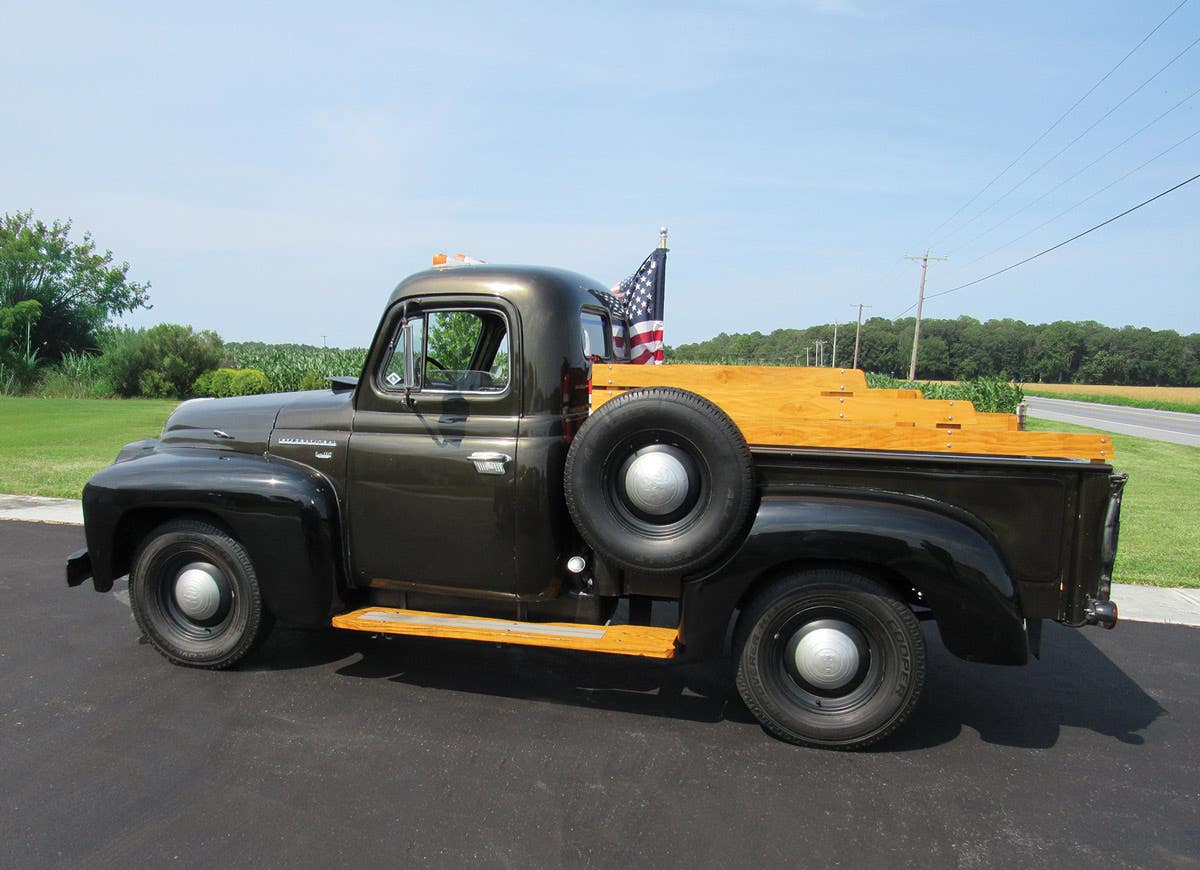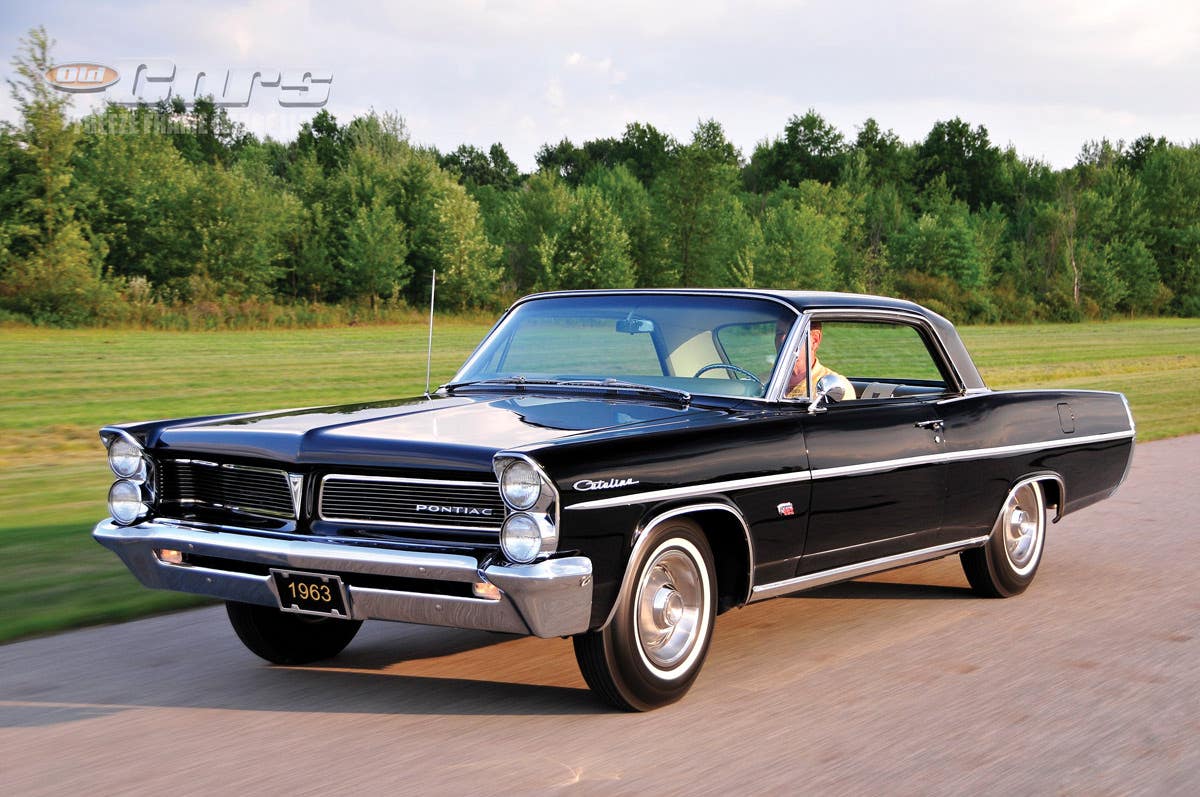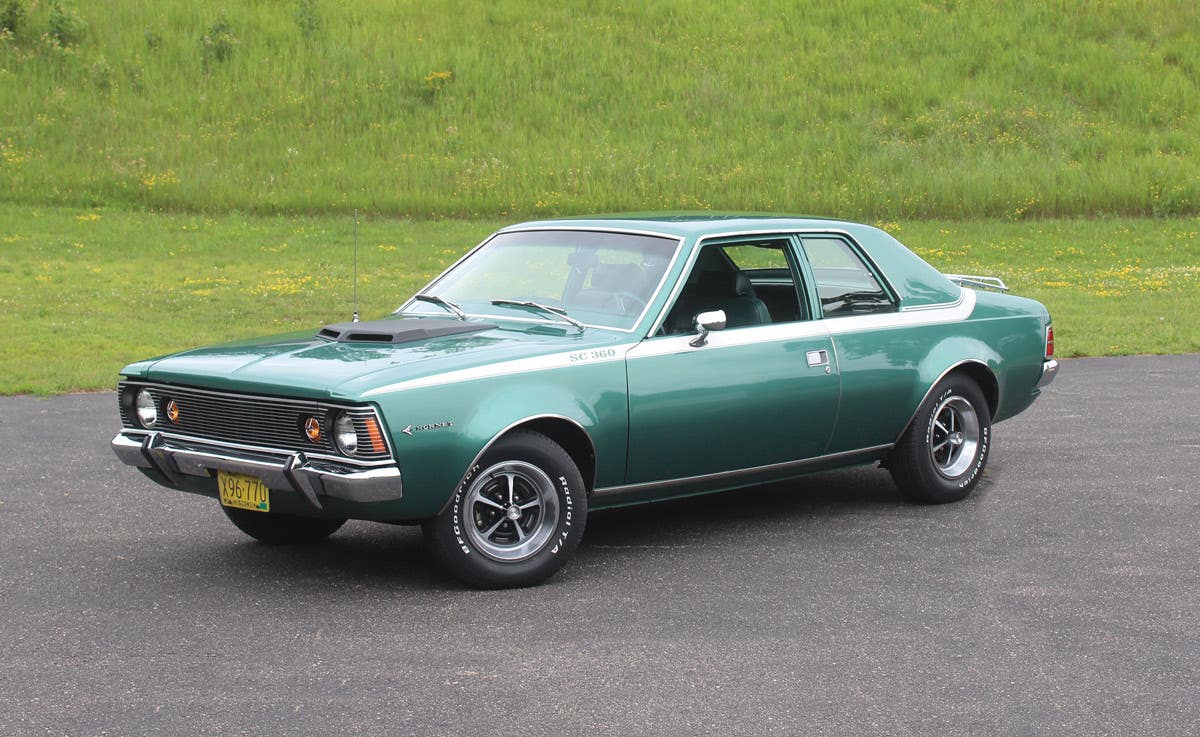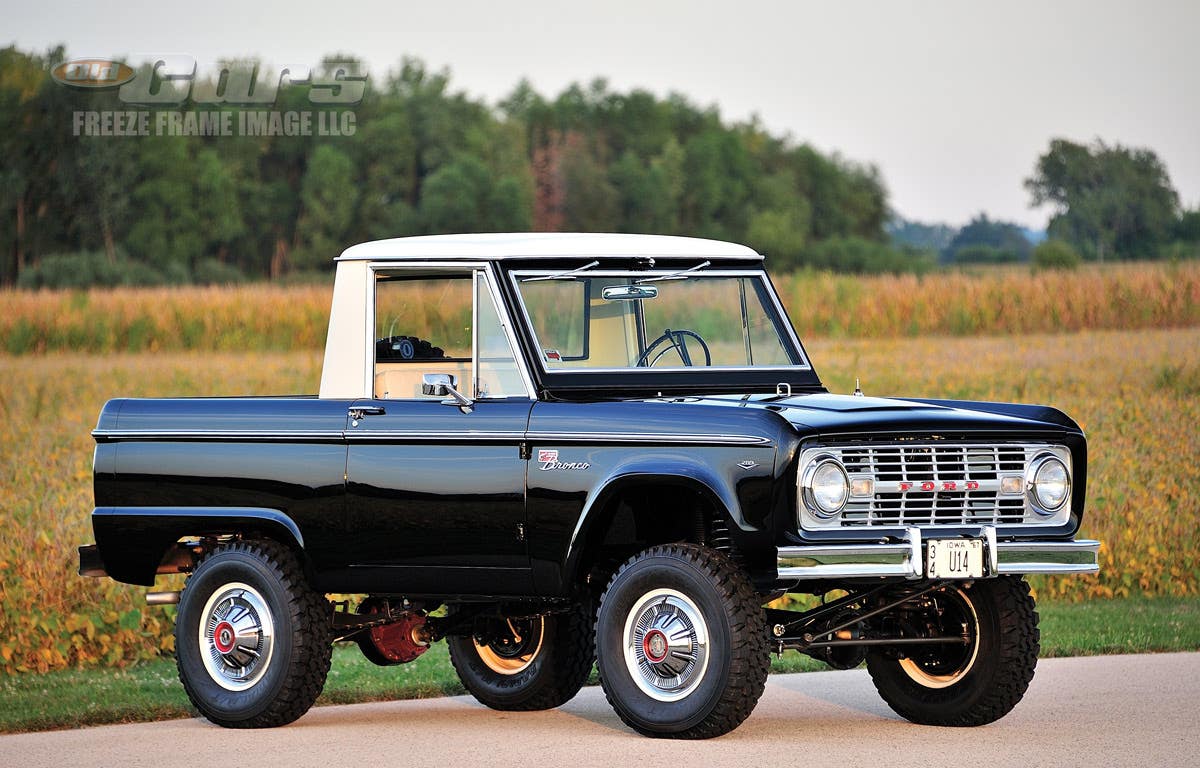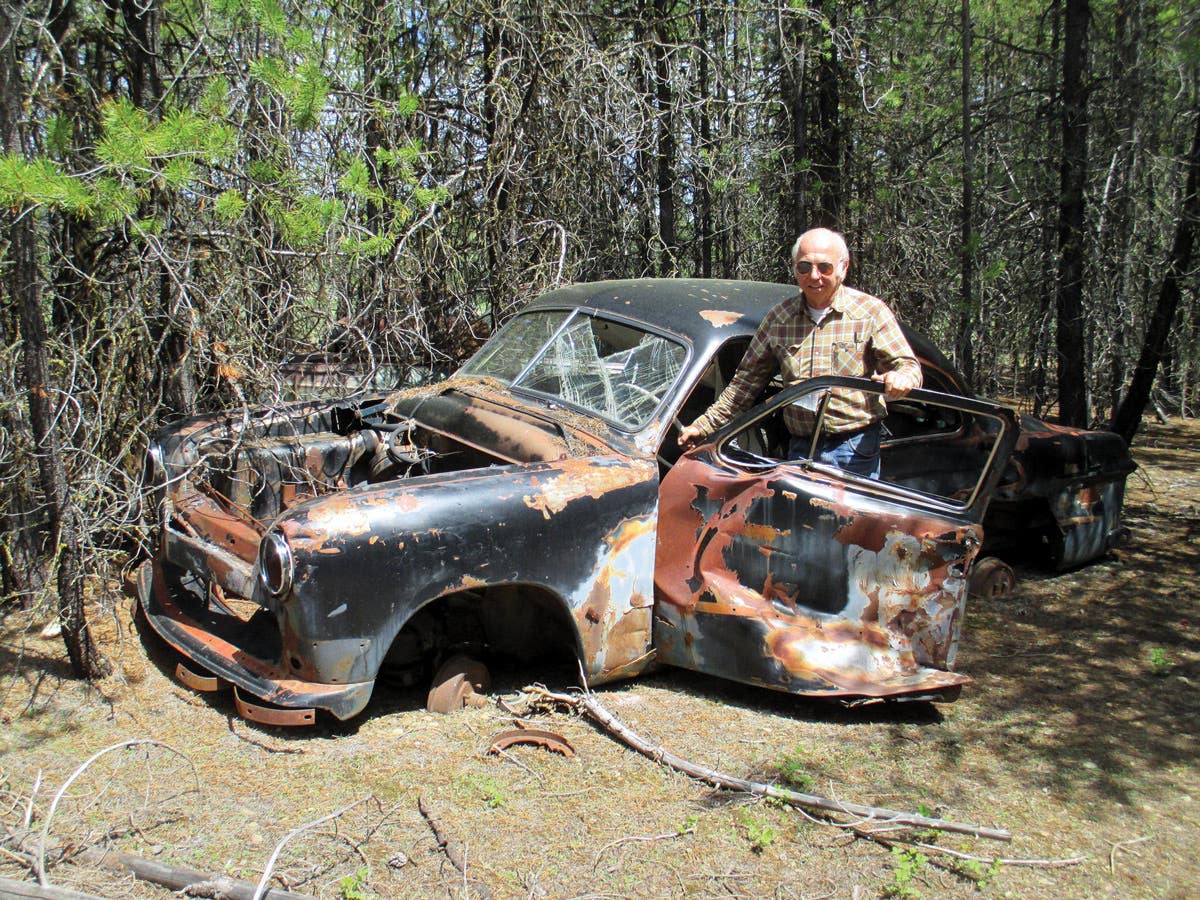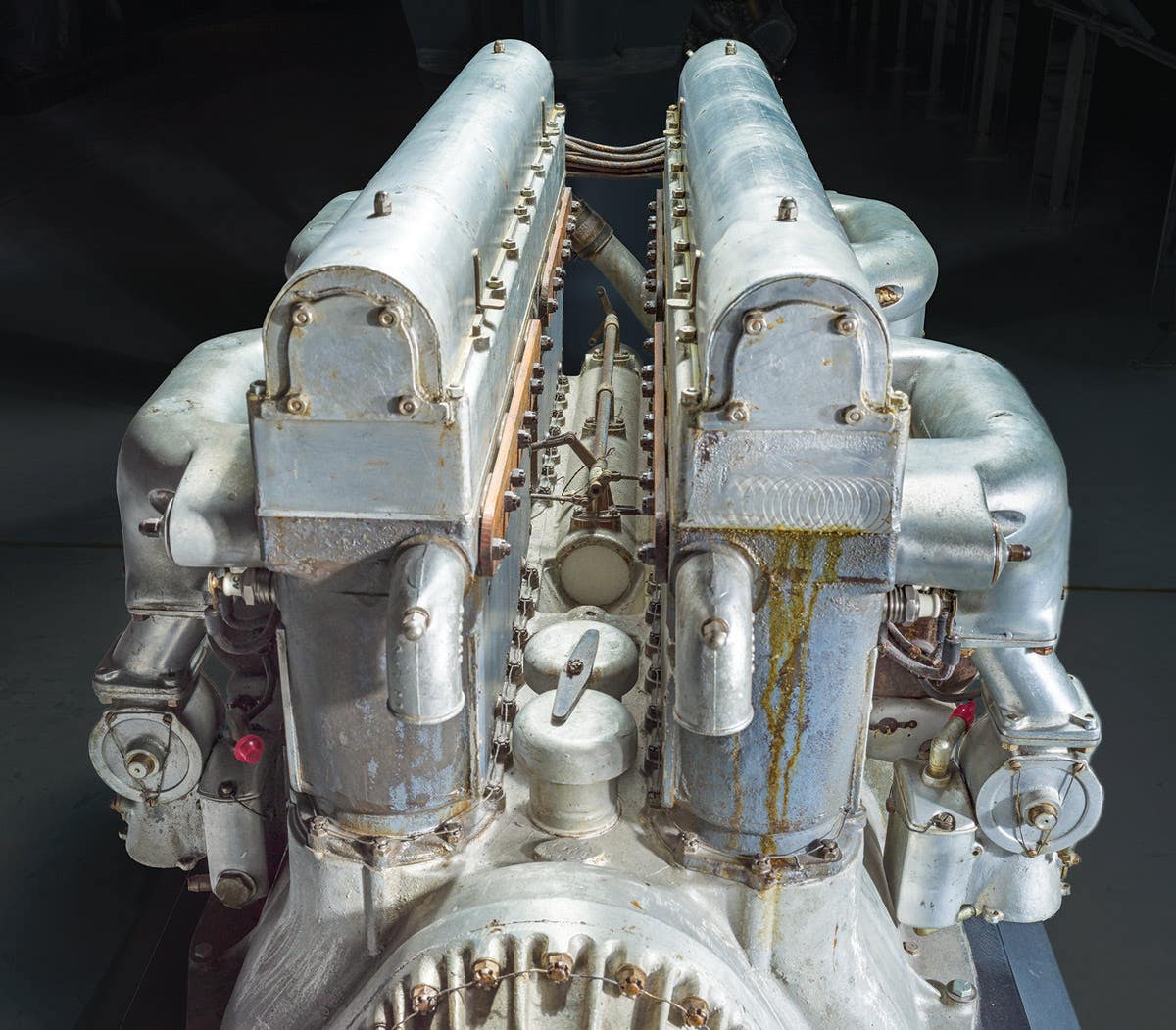The dream team of Kaiser and Frazer
Henry J. Kaiser and Joseph W. Frazer joined forces to make their mark in the 1940s.
Kaiser had planned to launch a completely face-lifted
lineup for 1950, but when time and money ran short,
cars such as this Virginian four-door hardtop were
unchanged.
During World War II, more than 700 Liberty and Victory ships, troop transports and other seagoing vessels were acclaimed to his credit. Add 50 Casablanca-type escort aircraft carriers, and it came to an entire fleet — a large one, at that. All were produced by two West Coast shipyards of the Kaiser Company, Inc., and one of the Oregon Shipbuilding Corp. All were under the control of the same man. Results delighted the U.S. Maritime Commission and the U.S. Navy.
Henry J. Kaiser was elated by his success. He was lord of all, corporately speaking, and when he said “let there be,” it was done by an army of workers. Even his son Edgar jumped at the command.
The desire for success in such men is hard to extinguish. As the war neared its end in 1945, Henry Kaiser craved new challenges. He turned inland, to Detroit, for his next venture. He would create a car company.
It wouldn’t be like others. This was to be started from scratch, although he knew nothing of the business. No matter. He had learned how to build ships on a scale no one had imagined. There was no reason he could not do likewise with car production.
Still, there were issues. Kaiser chose not to move to the Midwest. He would not abandon the majority of his business on the West Coast. There was a postwar boom nearly everyone expected, even in shipbuilding, for private business and the military. He was not a young man, either, and was comfortably settled. However, his son — ah, that was a different case! Edgar could travel, even move, in order to handle car affairs with Daddy Kaiser giving final commands. But it was a steep uphill struggle for anyone to enter the car business on a whim and a dream.
Money was no problem. Kaiser was rolling in it. His corporate achievements were good for any bank loan and his holdings were massive enough to back it up. But who would strike deals with auto parts suppliers? Laborers and unions? Who would know how to outfit a factory and organize a production line? A landlubber was needed, whose feet were firmly in the car industry. Enter: Joseph W. Frazer.
Frazer had risen through the car business. By the early 1930s he was with Chrysler Corp. He was beaming bright in sales management as the Airflow was launched and the Plymouth gained status as a new brand. He cheered. He encouraged. He nudged. He forced issues. He pushed, pushed, pushed. Success was the result.
As events swirled, he eventually landed at Graham-Paige, makers of a fine medium-price car. The products were not too extravagant, but creativity exuded from the offices of Graham. Small, compared to the “Big Three” and the notable independents of Studebakler, Nash, Hudson and Packard, Graham eagerly sought innovations. In the late 1930s, its cars offered supercharged engines. Sharknose styling hit next, making quite a wave among the press until the public watered down the enthusiasm with lackluster sales in the long run. As the 1940s dawned and the company was desperate for a new body design, Graham made a deal to use the old Cord dies from 1937. Graham was one step ahead of failure.
By 1946, Frazer was at the lead post at Graham, using whatever corporate magic he knew to keep the company’s image and hope alive and viable. When he and the Kaisers struck an understanding to enter car production as the sales boom was about to begin, the future seemed limitless.
Frazer took the post of president at Kaiser-Frazer Corp. Henry Kaiser only rarely ventured to the Midwest, but he was determined to retain a high degree of control. On Jan. 11, 1946, the company headquarters released the news that Edgar Kaiser was appointed vice-president and general manager of the Kaiser-Frazer Corp. He would make his headquarters at Willow Run, the former bomber plant, “which is rapidly being converted for the production of new Kaiser and Frazer cars and farm equipment.”
So read the word from on high.
Graham-Paige Motors had not lost its identity. It was in agreement to work within the new corporation to manifest the production of Frazers, to be exact. With Frazer in full beam, smiling with the thought of a car bearing his name, he must have been reminded of the joy that washed over Walter P. Chrysler in 1924 with the launch of his new car. The plant would also make lightweight equipment for farming.
Frazer knew the right people. The same day the announcement was made for Edgar Kaiser to join the team in Detroit, K-F also announced the appointment of A.K. Steigerwalt as manager of the parts and accessories division at Willow Run. The word came from W.A. McDonald, vice president over sales for K-F and G-P Motors. Steigerwalt had 30 years of experience in parts and service. From 1935 to 1943, he handled the job for Chrysler-Detroit, as Frazer well knew. Prior to that, Steigerwalt had managed General Motors parts and service divisions. A good man, this Steigerwalt; the type Frazer wanted; the type K-F needed; the type that would bring a tide of success.
The Kaisers loved to deal. So did Frazer. On Jan. 20, 1946, they had achieved another milestone in setting the company on firm ground. The Willow Run plant, built under federal grants, was awarded on a lease basis to K-F. The rent scale for the first two years was graduated: $500,000 for 1946, then $850,000 for 1947. Thereafter, it would be $1.2 million annually. It wasn’t long before the lease extended into the mid 1950s.
This was no mere plant. It was the world’s largest under a single roof. It was modern, built to wartime standards. Its construction cost had been $100 million. “Considered by many architectural engineers to be the finest structure of its kind ever built, Willow Run has 2,650,000 square feet of ground floor space in the main manufacturing building, which is ideal for automobile manufacture,” said K-F. There was parking space for 20,000 completed cars!
What of the cars that were initially produced? As the 1947 Kaiser and Frazer were revealed, yelps of delight rose in some sectors among potential buyers who wanted anything that was self-powered on four wheels. Yawns must have risen from some homes in America where appearance counted. Slab-sided styling was boxy but fresh, a trend that would be embraced by Ford and, to a degree, by Hudson and Nash. The design brought mixed responses but was generally accepted as the freshest and first postwar style.
To the untrained eye, the higher-priced Frazer and medium-priced Kaiser were, to be blunt, practically identical except for trim changes inside and out. Seat upholstery was superior in the Frazer, which also abounded with extras. More colors were added. This had become a tactile world, and car interiors, accessories, plus visual effects had gained importance.
The 100-horsepower six-cylinder engine was good, but not great. Made by Continental under contract and to K-F’s specs, the economical L-head carried a 226-cubic inch displacement. Brakes, wheels, and other features were good, also, but not innovative. However, cargo capacity in the trunk was generous, thanks to the rear seat being moved forward on the 123 ½-inch wheelbase.
Front-wheel drive was initially hyped, but the concept had a quick demise. It was washed away by the need to get production rolling as demand for the cars rose.
This was the start of a grand dream. The Kaisers loved the thrill. Frazer held high hopes. And the buying public was to benefit as the tide of success for K-F initially ran high and strong.



